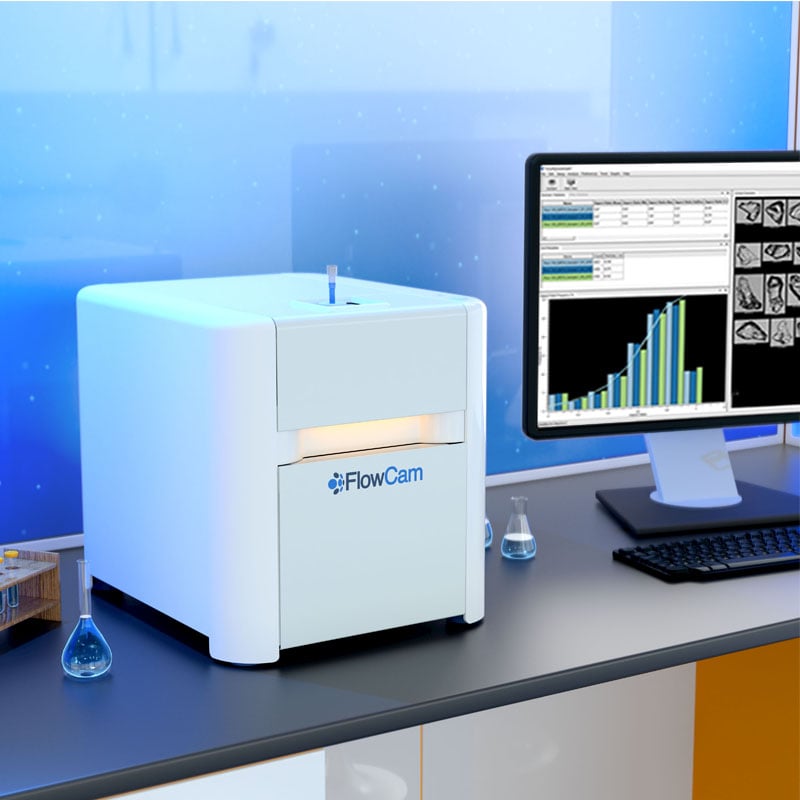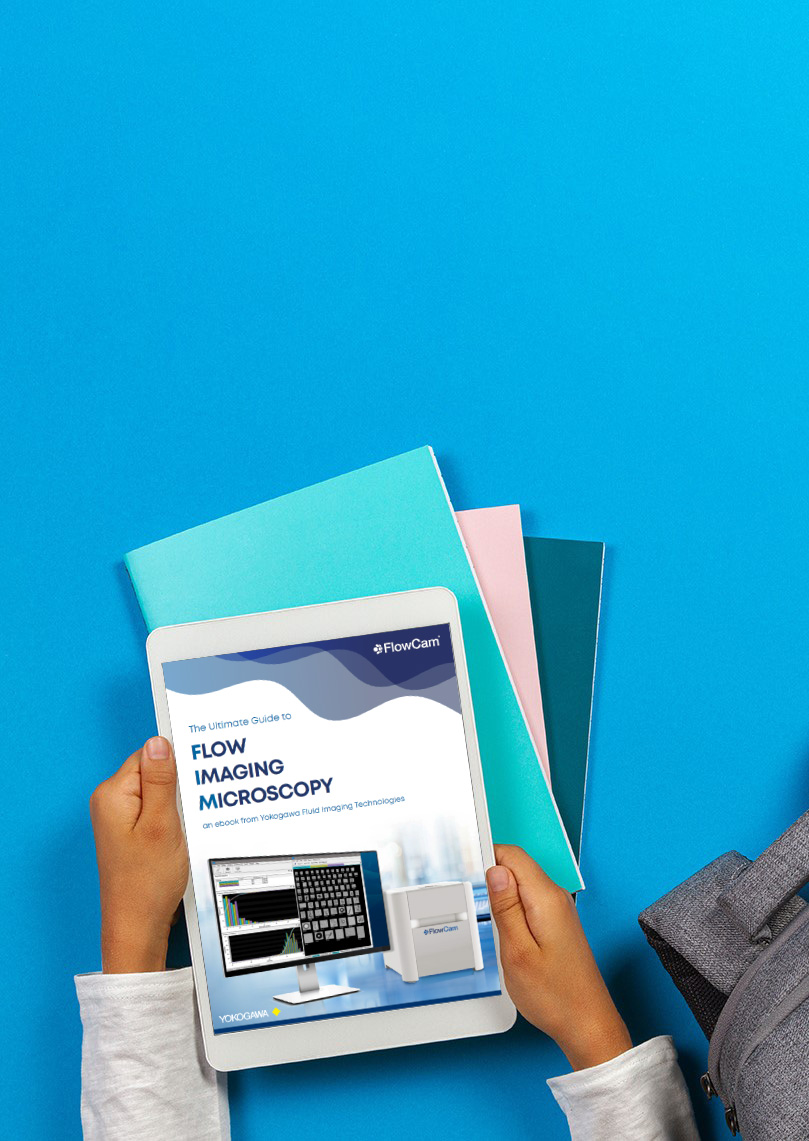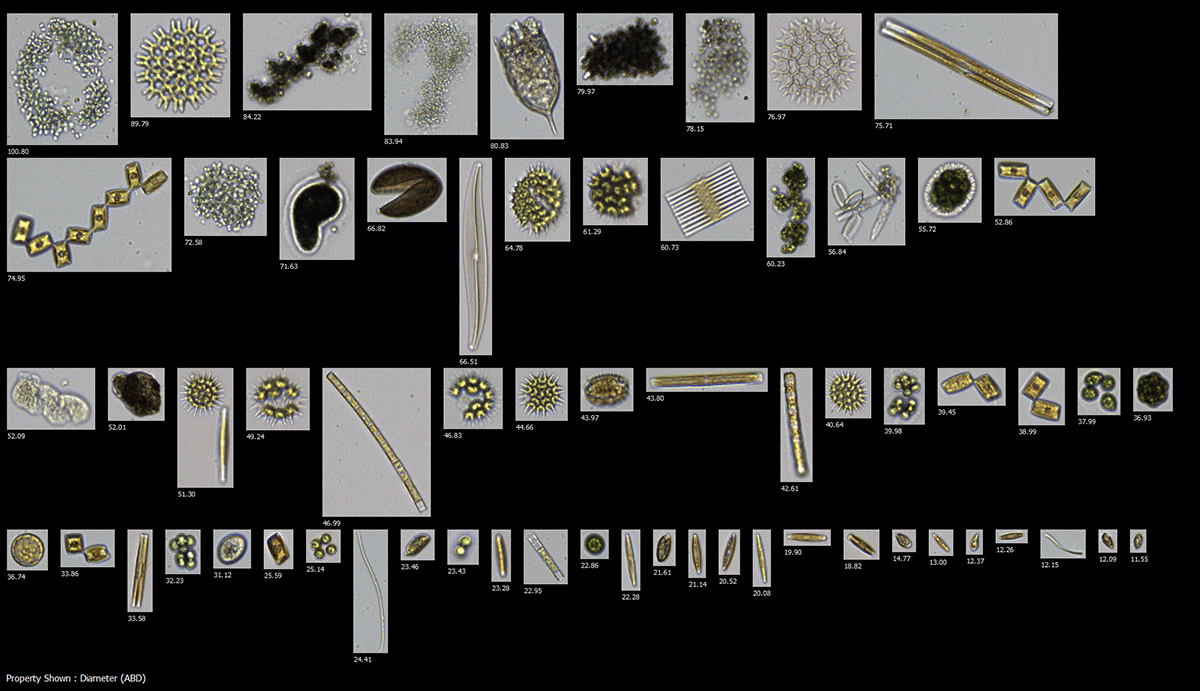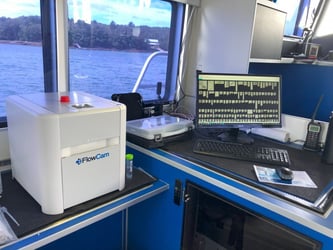Artificial intelligence (AI) is reshaping how scientists identify and classify plankton. Across aquatic science—from environmental monitoring to aquaculture and culture management—AI offers new opportunities for automating image analysis. But these tools are only as strong as the data behind them. As researchers look to scale up microalgae research and streamline workflows, FlowCam is proving to be a powerful source of the diverse image data needed to train reliable AI models. VisualSpreadsheet, the paired software that powers image analysis, now includes the option to export files in a format compatible with EcoTaxa. For FlowCam users, EcoTaxa provides a way to share plankton image data between collaborators.
Our new white paper, Leveraging FlowCam for AI-Driven Plankton Classification, examines how scientists utilize FlowCam images to develop AI-based tools for plankton identification, harmful algal bloom (HAB) detection, and laboratory culture monitoring. Through real-world case studies, best-practice guidelines, and insights into collaborative platforms, the paper provides a roadmap for integrating AI into aquatic research.
Why FlowCam Provides the Ideal Foundation for AI-Driven Plankton Identification
Effective AI recognition of plankton begins with consistent, high-quality data, and that is where FlowCam excels. Capable of imaging thousands of particles per minute, FlowCam generates detailed datasets that reflect the true complexity of aquatic samples across a wide range of particle sizes.
With FlowCam’s VisualSpreadsheet® software, users can visualize, sort, and export these images for use in external AI workflows. This combination of imaging speed, consistency, and data accessibility provides a strong foundation for AI-driven classification with FlowCam.

Key Considerations for Successful Plankton Recognition
One of the key takeaways from the white paper: effective AI is built on strong data foundations. As with any machine learning application, model reliability depends heavily on the quality, consistency, and diversity of training images – along with the taxonomic expertise used to label them.
FlowCam’s core strength lies in generating large volumes of consistent imagery that capture the real-world complexity of aquatic samples. When integrated into a thoughtful AI workflow, this image data can support faster, more scalable classification across a wide range of applications.
Real-world case studies illustrate what this looks like in practice. Mediterranean researchers have used FlowCam images to train deep learning models for recognizing microplankton across dinoflagellates, diatoms, and green algae. In Denmark, FlowCam helped monitor Microcystis bloom dynamics in a mesocosm system. Another study used AI to distinguish among cultured microalgae genera, including Chlamydopodium, Chlorella, and Haematococcus. These examples show how FlowCam enabled the generation of well-labeled image libraries that formed the backbone of reliable AI identification systems.
This white paper offers a grounded, practical entry point – combining case studies with actionable guidance to help you move forward, whether you are just beginning to explore how FlowCam images can support AI development or refining an existing workflow.
The White Paper | Leveraging FlowCam for AI-Driven Plankton Classification
This white paper is designed for researchers and professionals in aquatic science—whether you already use FlowCam or are exploring its broader potential, including as a foundation for external AI workflows. Whether you are identifying functional groups in marine samples, monitoring cyanobacterial blooms, or automating culture analysis, this guide offers practical strategies for building reliable, well-trained AI models with FlowCam image data.
 What You'll Learn:
What You'll Learn:
- Why FlowCam’s imaging principles make its data especially well-suited for AI-driven analysis
- What distinguishes FlowCam’s built-in statistical classifiers from external AI models
- How other researchers have successfully applied AI tools to FlowCam image datasets
- Best practices of structuring, annotating, and balancing a robust training dataset
- Why expert taxonomy is still essential - even in automated pipelines











